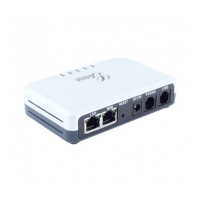is not Telkom SA or CBCOM.
T1 is an estimate of the round-trip time between the client and server
transactions.
If the network latency is high, select larger value for more reliable usage.
Maximum retransmission interval for non-INVITE requests and INVITE
responses.
This parameter sets the payload type for DTMF using RFC2833
Preferred DTMF
method (in listed
order)
The HT503 supports up to 3 different DTMF methods including in-audio, via
RTP (RFC2833) and via Sip Info. The user can configure DTMF method in a
priority list.
DTMF-RELAY Tag
Respect SIP INFO
Default is No. If set to No, the DTMF-relay tag in Accept Header is always
added in outbound INVITE. If set to Yes, it depends on if SIP INFO is
chosen in Preferred DTMF Method.
Default is No. If set to yes, use above DTMF order without negotiation
Default is No. If set to yes, flash will be sent as DTMF event.
Default is Yes. (If Yes, call features using star codes will be supported
locally)
This parameter allows users to configure a User ID or extension number to
be automatically dialed when offhook. Please note that only the user part of
a SIP address needs to be entered here. The HT503 will automatically
append the “@” and the host portion of the corresponding SIP address.
Note: User will need this IP address when accessing the IVR via the web
configuration page.
Configure the delay time for offhook auto-dial function. Range is 0-60
seconds, default is 0.

